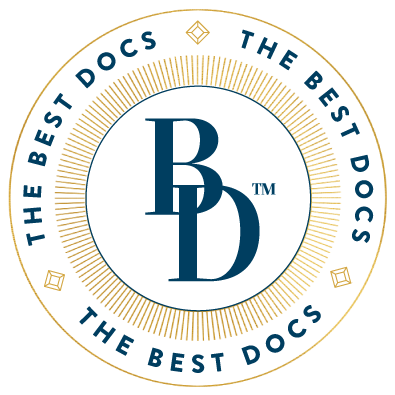The Power Of Hip Arthroscopy – Healing With Less Stress, Pain And Scarring
Hip issues can be extremely painful. And when rest, activity modification or injections don’t work, the persistent pain often leads to frustration, anger, and an unhealthy sedentary lifestyle.
This is why Dr. Jon Hyman—a double board-certified surgeon specializing in hip problems—finds so much joy in helping patients. “I’ve spent decades of my life learning about and solving hip pain,” he says. “Seeing my patients walk away from surgery—literally, walk away—with almost no pain makes it all worthwhile.”
One of the particularly exciting developments, according to Dr. Hyman, has been the rise of hip arthroscopy. Dr. Hyman says the procedure is relatively new, but the results are worth noting. With our readers in mind, we asked Dr. Hyman to explain the procedure to provide a better sense of what it is and why it’s so effective.
“In hip arthroscopy, a surgeon will use a device called an arthroscope, a small surgical instrument—like a tiny camera—that allows them to see inside the hip joint without having to cut a large incision,” Dr. Hyman explains. Typically, two small punctures—each usually less than one-half an inch long—are placed at the side of the hip to accommodate the arthroscope. By contrast, traditional hip surgery without the arthroscope can require an incision roughly six inches long.
The difference between the smaller incisions and the larger incision is described as “minimally invasive surgery” vs “invasive surgery”. This is an important distinction because the smaller (minimally invasive) incisions mean less stress on the muscles and nerves. According to Dr. Hyman, the benefits can be extensive:
Less blood loss during surgery
Quicker recovery
Less scarring
Less post-operative pain
“Seeing my patients walk away from surgery—literally, walk away—with almost no pain makes it all worthwhile.” - Dr. Jon Hyman
Still, Dr. Hyman explains that hip surgery requires a special set of skills that go beyond routine arthroscopy. “Until very recently, hip arthroscopy often involved looking inside the joint with a camera and rinsing it out,” he explains. “With new advances, however, a select few surgeons have actually learned ways to treat and repair a wide variety of conditions like loose bodies, labral tears, cartilage damage, bone spurs, arthritis and impingement.”
One of those special skills revolves around the actual arthroscope. “Routine arthroscopy—for knee, shoulder or elbow surgery—requires a 30-degree camera lens on the periscope tools. In hip arthroscopy, a special 70-degree lens is required,” he says. Although similar to the 30-degree lens, the 70-degree lens operates a bit differently and requires distinct training to be used properly.
Additionally, arthroscopic hip surgery requires the patient to lay in a special position on the operating table, so the hip joint can be opened to insert the camera. “This is not an easily learned skill because the hip joint is very tight and deep,” Dr. Hyman asserts.
Typical hip arthroscopic surgery takes roughly one to two hours to complete, depending upon the complexity of the procedure. “The arthroscope is inserted so the joint damage can be assessed. Injured tissue is treated and repaired, and dissolvable sutures are placed in the skin before bandages are applied,” Dr. Hyman explains.
Although the surgical steps seem fairly straightforward, Dr. Hyman asserts that patients must be sure to work with a surgeon who has specific training and a thorough understanding of the hip and the procedure. “My best advice is to work with a board-certified surgeon who specializes in hip surgery,” he advises.
Board Certification indicates that a doctor has been trained in a certain specialty and has chosen to take certification exams given by doctors in the specialty. To maintain their certification, doctors must undergo continuing education after passing the exam. This is done by a written and oral test. Like most tests, not everyone passes.
Dr. Hyman also cautions that some doctors are not certified by the national governing body of their specialty. For orthopaedics, this is the American Board of Orthopaedic Surgeons. It is important to check the quality of the surgeon’s training.


